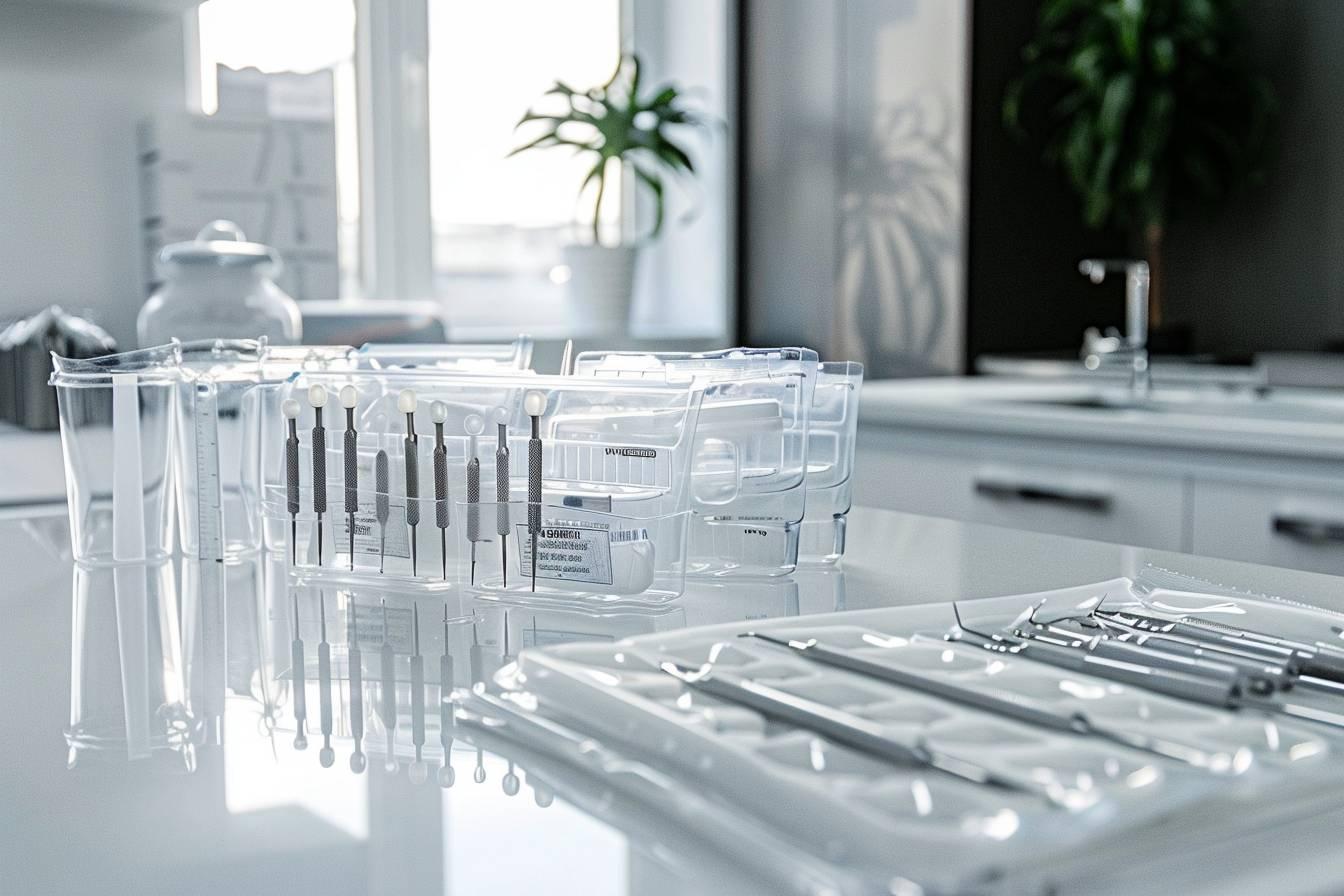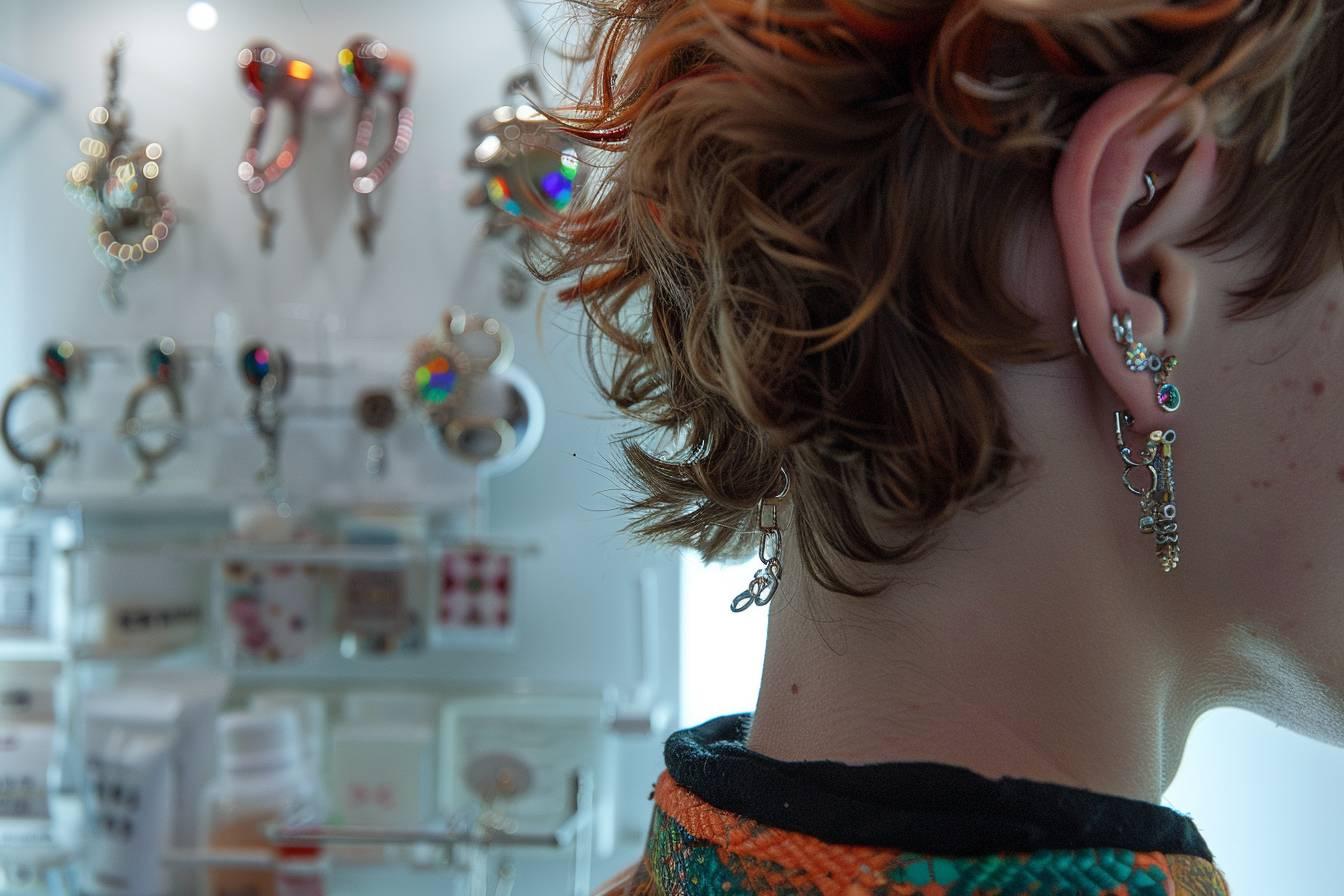Piercing, an age-old form of body expression, has enjoyed a resurgence in popularity in recent decades. The practice, which involves piercing the skin to insert a piece of jewelry, appeals to a varied public in search of originality and self-affirmation. Whether you’re tempted by your first piercing or want to deepen your knowledge, this article will guide you through the different aspects of this body art.
The different types of piercing: a range of possibilities
The world of piercing offers a multitude of options, each with its own particularities and symbolism. Among the most popular are :
- Nose piercings: discreet or assertive, they can take the form of a ring or a stud.
- Ear piercings: from the simple lobe to the complex industrial, the possibilities are endless.
- Tongue piercings: bold and expressive, they require special attention to hygiene.
- Belly-button piercing: very much in vogue since the 90s, this remains a much-loved classic.
Each type of piercing requires a specific technique and a variable healing time. For example, an earlobe piercing generally heals in 6 to 8 weeks, while a cartilage piercing can take up to 6 months. It’s essential to choose an experienced professional to perform your piercing, to minimize risks and achieve an optimal aesthetic result.
The jewels used for piercings are just as varied as the locations. The main ones are :
- Bars: straight or curved, ideal for tongue or eyebrow piercings.
- Rings: classic and versatile, they adapt to a wide range of locations.
- Studs: discreet and elegant, perfect for nose or ear piercings.
The choice of material is also crucial.Surgical steel, titanium andgold are recommended for their biocompatibility and corrosion resistance. These materials reduce the risk of allergies and infections, ensuring better healing.
Risks and precautions: a considered approach
Although piercing is generally safe when performed under the right conditions, it does entail certain risks that you should be aware of. The most frequent complications include :
- Infections: these can occur if hygiene conditions are not optimal, or if post-piercing care is neglected.
- Allergies: some people may develop an allergic reaction to the metals used in jewelry.
- Hypertrophic scars: excessive scarring can lead to the formation of keloids.
- Rejection of the piercing: in some cases, the body can “expel” the jewel, particularly in the case of surface piercings.
To minimize these risks, it’s important to choose a qualified professional and follow his or her advice scrupulously. Before proceeding with the piercing, the practitioner must ensure that you have no medical contraindications, such as coagulation disorders or immunosuppression.
Legislation strictly regulates the practice of piercing. In France, for example, minors must obtain written consent from their parents or legal guardians. In addition, piercing studios are subject to rigorous hygiene standards, including the use of sterile, single-use equipment.
| Type of piercing | Average healing time | Pain level (out of 10) |
|---|---|---|
| Earlobe | 6-8 weeks | 2-3 |
| Nose | 4-6 months | 4-5 |
| Tongue | 4-8 weeks | 6-7 |
| Navel | 6-12 months | 4-6 |

Care and maintenance: the key to a successful piercing
The post-piercing period is crucial to the success of your body modification. A rigorous follow-up of the care recommended by your piercer is essential to prevent infection and promote optimal healing. Here are the basic steps to follow:
- Daily cleaning: use a sterile saline solution or a specific product recommended by your professional. Avoid alcohol and hydrogen peroxide, which can irritate the wound.
- Gentle drying: after cleaning, gently dry the area with a clean tissue. Avoid towels, which can harbour bacteria.
- Avoid touching: handle your piercing with clean hands only, and as little as possible.
- Be patient: don’t remove the jewelry until the healing process is complete, even if the wound seems to have healed.
Healing times vary considerably depending on the location of the piercing. For example, an earlobe piercing usually heals in 6 to 8 weeks, while a cartilage piercing can take up to 6 months. During this period, it’s advisable to avoid swimming pools, hot tubs and potentially contaminated water sources.
Diet also plays a role in the healing process. A diet rich in vitamin C and zinc can promote healing. Foods such as citrus fruits, green vegetables, nuts and seeds are particularly beneficial. Conversely, it is advisable to limit alcohol and tobacco consumption, which can slow healing.
If you notice any signs of infection, such as persistent redness, abnormal swelling, pus discharge or fever, consult a health professional immediately. Do not remove the jewelry without medical advice, as this may aggravate the infection by trapping bacteria.
The evolution of piercing: trends and innovations
Far from being a modern practice, piercing has its roots in antiquity. Ancient civilizations such as the Egyptians, Mayans and peoples of India already practiced various forms of body piercing for ritual, spiritual or aesthetic purposes. Today, piercing is part of a more personal approach, combining self-expression and aesthetic research.
Current piercing trends reflect this evolution. There is a growing interest in :
- Micro-piercings: tiny jewels, often in constellations, for a delicate, refined effect.
- Surface piercings: performed on flat areas of the body such as the nape of the neck or the sternum.
- Dermal piercings: implanted under the skin to give the illusion of “floating” jewelry.
The piercing industry is constantly innovating in terms of materials and designs. Anodized titanium jewels now offer a palette of vibrant colors, while precious and semi-precious stones make their way into haute joaillerie creations. Artists like Maria Tash have elevated piercing to the level of art, offering elaborate compositions that transform the ear into a veritable canvas.
3D technology is also revolutionizing the practice, enabling the creation of bespoke jewelry perfectly adapted to each individual’s anatomy. This advanced personalization opens up new perspectives in terms of comfort and aesthetics.
Finally, piercing is part of a broader trend towards body positivism and self-affirmation. It is becoming a means of exploring and celebrating the body, transcending traditional standards of beauty. This societal evolution is helping to democratize the practice, making it more accessible and accepted in various professional and social circles.

